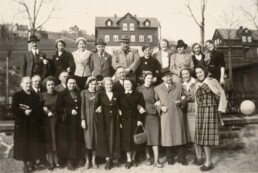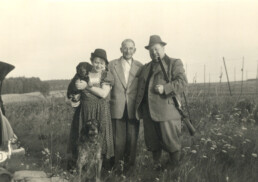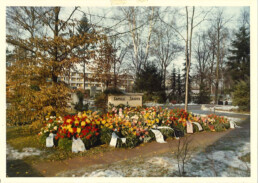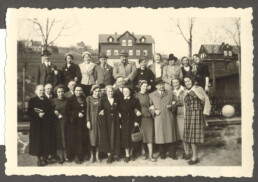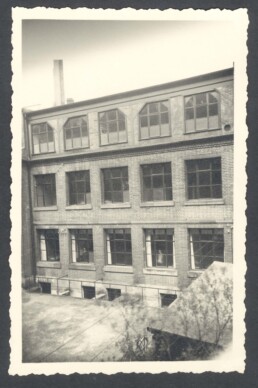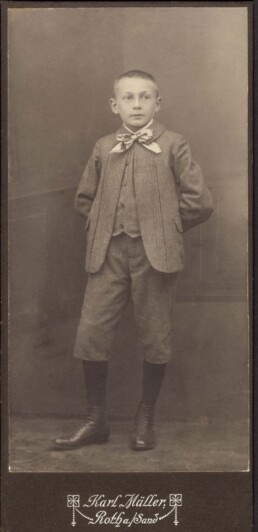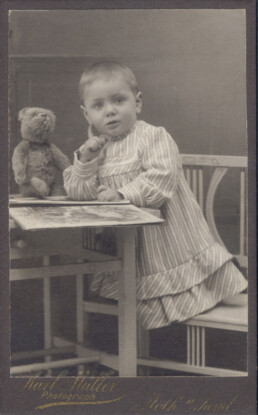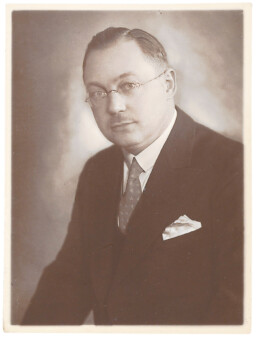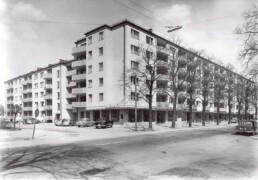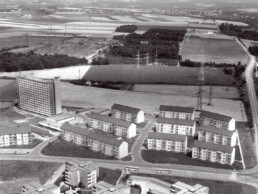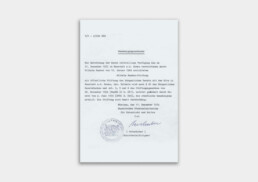History
History
History
Our founder:Wilhelm Sander
Wilhelm Sanders’ journey from sterile catgut manufacturer to successful real estate entrepreneur is an inspiring example of versatility and entrepreneurial vision. His legacy lives on in our foundation.
History
Our founder:Wilhelm Sander
Wilhelm Sanders’ journey from sterile catgut manufacturer to successful real estate entrepreneur is an inspiring example of versatility and entrepreneurial vision. His legacy lives on in our foundation.

Sanders’ company, Dr. Ruhland Nachfolger, specialised in the crucial final step in catgut production: sterilisation. In a complex process, the threads were twisted to different thicknesses and the uneven surfaces were smoothed. In a final step, the finished threads were usually packaged in sterile balls and stored in polished glass bottles in an alcohol solution.
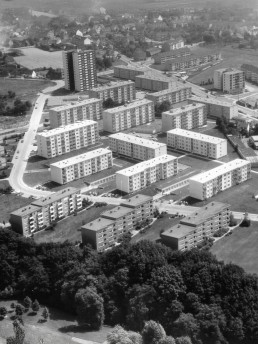
Following his success in the manufacture of sterile catgut, Wilhelm Sander stumbled upon his next major challenge by chance: company-sponsored housing construction. In 1955, while reading the newspaper one evening, he discovered an advertisement for a construction project in Leverkusen-Schlebusch that immediately caught his interest.
Without hesitation, Sander seized the opportunity and began a large-scale construction project for Bayer AG Leverkusen. Between 1956 and 1962, 440 flats and 16 shops were built, which were rented exclusively to company employees. Bayer AG supported the project with interest-free loans, guaranteed long-term occupancy, deducted the rent from employees’ salaries and transferred it directly to Sander.
This commitment marked the beginning of an unprecedented housing construction activity that shaped Wilhelm Sander’s life in the years that followed. When he died in 1973, he left the Wilhelm Sander Foundation an impressive legacy: 4,700 apartments in Germany and Switzerland.
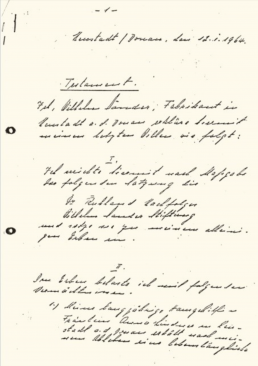
After his death, the executor of his will, Dr Christian Schelter, and the later first chairman of the board, Dr Jörg Koppenhöfer, took on the task of settling the estate and adapting the foundation’s statutes. On 11 December 1974, the Bavarian State Ministry of Education and Culture granted approval for the Wilhelm Sander Foundation.
At the constituent meeting on 13 October 1975 in Neustadt, the board of directors and the scientific board were appointed, giving the foundation the capacity to act. In the same month, the executor of the will handed over Wilhelm Sander’s estate to the foundation.

Getting started in medical technology.
Sanders’ company, Dr. Ruhland Nachfolger, specialised in the crucial final step in catgut production: sterilisation. In a complex process, the threads were twisted to different thicknesses and the uneven surfaces were smoothed. In a final step, the finished threads were usually packaged in sterile balls and stored in polished glass bottles in an alcohol solution.

Start in residential construction.
Following his success in the manufacture of sterile catgut, Wilhelm Sander stumbled upon his next major challenge by chance: company-sponsored housing construction. In 1955, while reading the newspaper one evening, he discovered an advertisement for a construction project in Leverkusen-Schlebusch that immediately caught his interest.
Without hesitation, Sander seized the opportunity and began a large-scale construction project for Bayer AG Leverkusen. Between 1956 and 1962, 440 flats and 16 shops were built, which were rented exclusively to company employees. Bayer AG supported the project with interest-free loans, guaranteed long-term occupancy, deducted the rent from employees’ salaries and transferred it directly to Sander.
This commitment marked the beginning of an unprecedented housing construction activity that shaped Wilhelm Sander’s life in the years that followed. When he died in 1973, he left the Wilhelm Sander Foundation an impressive legacy: 4,700 apartments in Germany and Switzerland.

Establishing the Foundation.
After his death, the executor of his will, Dr Christian Schelter, and the later first chairman of the board, Dr Jörg Koppenhöfer, took on the task of settling the estate and adapting the foundation’s statutes. On 11 December 1974, the Bavarian State Ministry of Education and Culture granted approval for the Wilhelm Sander Foundation.
At the constituent meeting on 13 October 1975 in Neustadt, the board of directors and the scientific board were appointed, giving the foundation the capacity to act. In the same month, the executor of the will handed over Wilhelm Sander’s estate to the foundation.
